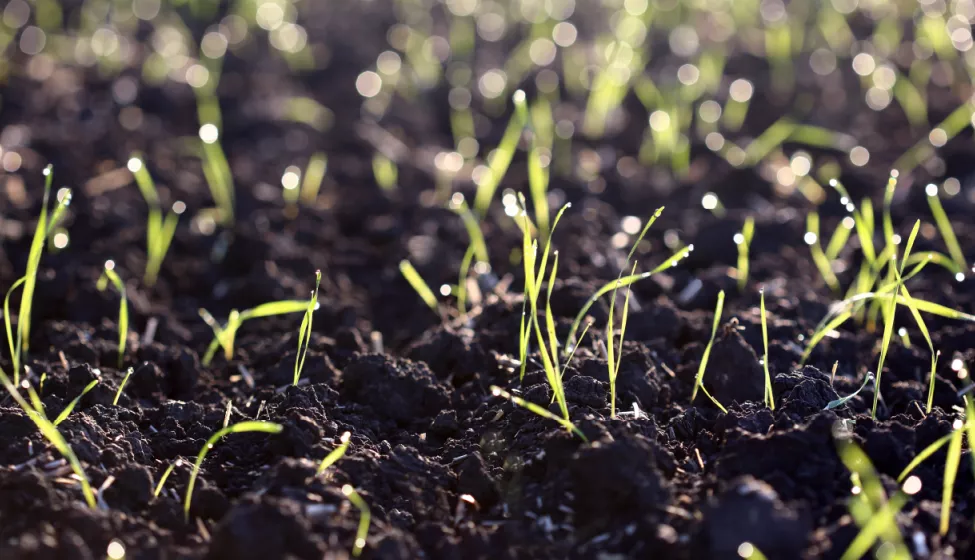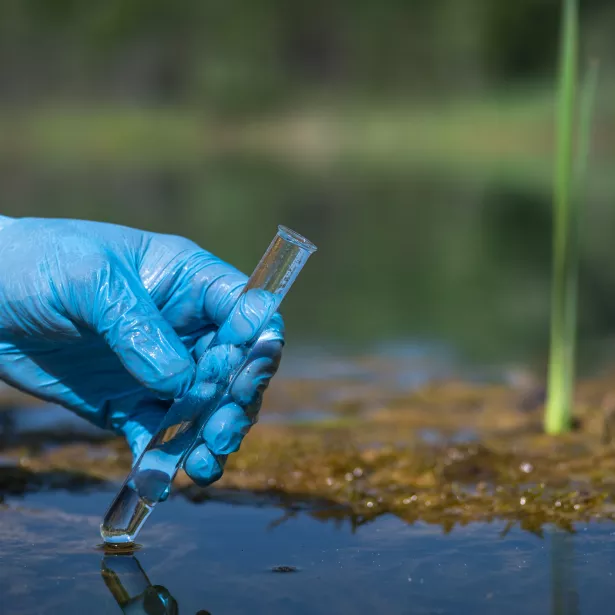September 29, 2022
How increasing soil carbon can impact climate change & water retention
Atmospheric carbon plays a key role in global warming and climate change, but a lesser-known fact buried from view is that organic matter in soil contains at least three times as much carbon as the atmosphere and more carbon than all the vegetation on Earth. Consequently, even a relatively small annual increase in soil carbon could, on a large enough scale, have a substantial positive impact on the global carbon cycle. For example, an increase in the global soil carbon stock of just 0.5% would be equivalent to offsetting a full year of current anthropogenic fossil fuel emissions.
Increasing the carbon content of soil can not only help address climate change but can also improve soil fertility, water retention, and drought resilience, which means using less water and fertilizer as well as reducing greenhouse gas emissions from excess fertilization. Carbon-rich, water-retaining soil also creates healthier ecosystems that need fewer herbicides and pesticides with better nutrient cycling and retention, improved soil structure, and less erosion.
Dead microorganisms can compose as much as 50% of the soil organic matter pool, forming one of the largest stocks of organic carbon on the planet.
It's not surprising, then, that soil organic carbon is heralded as the most important indicator of soil health. It's also a key pathway for stakeholders in the agricultural and land-use industries to increase the health of their soil while lowering costs. Increasing soil carbon content requires fostering a dynamic ecosystem that includes a diverse, active microorganism community and taking steps to actively manage and monitor overall soil health.
Wanted: microorganisms — dead or alive
Microorganisms and plants play a central role in increasing soil organic carbon. Plants contribute by removing carbon dioxide from the air through photosynthesis and injecting 20-40% of this carbon into the soil through their roots. Microbes help decompose plant litter, which forms soil organic matter. Soil microbes mediate widespread breakdown and transformation of plant litter into their own cells and other byproducts, some of which become intimately bound to soil minerals.
Mineral-bound organic matter is largely produced by microbes, but it is protected from further biodegradation, creating a long-term store of carbon out of the atmosphere. Even though microbes release carbon dioxide as they feed on plant litter, an active and diverse microbial community is essential to creating and integrating new carbon into soil. Partially degraded plant litter and microbial byproducts also form dissolved organic carbon, contributing significantly to the delivery of carbon to freshwater rivers and lakes, which has a similar magnitude to the total absorption of carbon dioxide by the world's oceans.
But microbes may impact soil organic carbon the most through dying. In healthy soil, microbes proliferate in abundant diversity, and just a tablespoon of soil contains millions of species of microbes. Dead microorganisms can compose as much as 50% of the soil organic matter pool, forming one of the largest stocks of organic carbon on the planet.
How healthy is your soil?
While a diverse microbial community enhances soil health, overuse of fertilizers, especially synthetic ones, can harm soil health by selecting for certain opportunistic species and lowering overall biodiversity. Synthetic fertilizers can depress the microbial populations involved in natural nutrient cycling and promote microbial species that produce potent greenhouse gases such as nitrous oxide, which is 300 times more potent at trapping heat in the atmosphere than carbon dioxide. Plants may also release less carbon into soil when exposed to synthetic fertilizers.
Tilling soil can further reduce carbon storage. In the short term, tilling can provide a quick nutrient flush that helps the next crop grow, but it also has the potential to disrupt microbial communities and release carbon from the soil into the atmosphere, which creates carbon-depleted soil that holds less water. Over-tilling can cause a long-term decline in productivity as the land becomes more arid, leading to erosion and increased salinity. Conversely, no-tillage farming has been shown to prevent erosion, help retain water, and protect the soil ecosystem, increasing soil organic carbon content.
In addition to optimizing fertilizer use and tilling, monitoring soil health factors can help inform management to improve soil carbon content. Monitoring may include:
- The number and types of soil enzymes that help break down and store carbon, nitrogen, sulfur, and phosphorus.
- Soil nutrient levels such as carbon, nitrogen, sulfur, and phosphorus, among others.
- The variety of macro invertebrates, nematodes, and other worms that support a healthy ecosystem.
- Soil water holding capacity.
Pedotransfer functions, which estimate soil properties from data available from soil surveys, offer a time-efficient and cost-effective way to test soil organic carbon content, water holding capacity, and other characteristics. Pedotransfer functions can show the substantial effects of soil organic carbon on the water holding capacity and enable future modeling to determine which soil management changes are likely to increase soil organic carbon and provide positive changes in water holding capacity for better drought resistance.
How Exponent Can Help
Our Environmental & Earth Sciences practice helps clients improve soil health and carbon content by analyzing complex ecological and chemical data sets at scales ranging from continents to soil pores using multivariate statistics, pedotransfer functions, and machine learning techniques. We can model chemical transformations, energetic yield, and bioavailability of chemical species, thereby understanding complex microbiological controls on the fate and transport of nutrients, contaminants, trace gases, and elements. With expertise in bacterial genome DNA sequencing, we can also reconstruct environmental bacterial, fungal, and archaeal genomes and metabolic pathways to predict microbially mediated consumption and transformation of nutrients such as ammonium, nitrate, nitrite, phosphate, carbon dioxide, and various sulfur bearing species for improved soil health.
What Can We Help You Solve?

Environmental Chemistry & Geochemistry
Site and exposure assessments, environmental forensics, and remediation to support regulatory and litigation requirements.

Sustainability & Climate Change
Scientific and engineering insights to improve and quantify sustainability practices and secure vital resources and assets.

Ecological & Biological Sciences
Assess biological and ecological impacts for challenging environmental projects.



